These Colorful and Hardy Plants Are Perfect for Creating a Vibrant Winter Garden

"Hearst Magazines and Yahoo may earn commission or revenue on some items through these links."
Your garden most likely reaches the very height of its beauty in spring, summer, and even fall. But come winter, the garden doesn't have to sleep. In fact, some plants actually show off their beauty the biggest during the coldest months of the year. Many winter flowering perennials and flowering shrubs—and even a few annual winter flowers, too—offer joyful color, shelter for wildlife, and winter interest to your otherwise bare winter garden. Here, we've rounded up the best winter flowers that bloom this time of year, from bright red Winterberry, sunny yellow Winter Aconite and Mahonia, sweet Camellias and Hellebores, and more.
When shopping for winter flowers, choose plants that can survive winters in your USDA Hardiness Zone (find yours here). Plan to plant at least six weeks before the ground freezes in your area. Water well to help the plant push out roots and get established quickly. But don’t be surprised if your plants don’t put on a spectacular show the first year. The old saying with perennials is “creep, walk, run,” meaning they’re slow to take off, but by their third season, they’re generally big and beautiful. Shrubs may take a season or two before becoming full and lush as well. With patience and planning, planting a selection of winter flowers and plants brings cold season surprises as well as the promise of springtime to come.
Winter Jasmine
A doppelgänger to spring-blooming forsythia, winter jasmine's bright yellow blooms bring sunny color to winter days. It's moundy and viney and makes quite a statement when planted in groupings.
USDA Hardiness Zones: 6 to 9
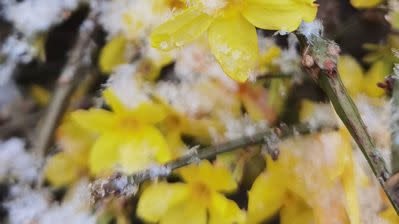
Glory of the Snow
Adorable star-shaped flowers, also known as snow glories or chionodoxa, are a nice consideration for ground cover, as they spread easily. Plant bulbs in fall before the ground freezes.
USDA Hardiness Zones: 3 to 10
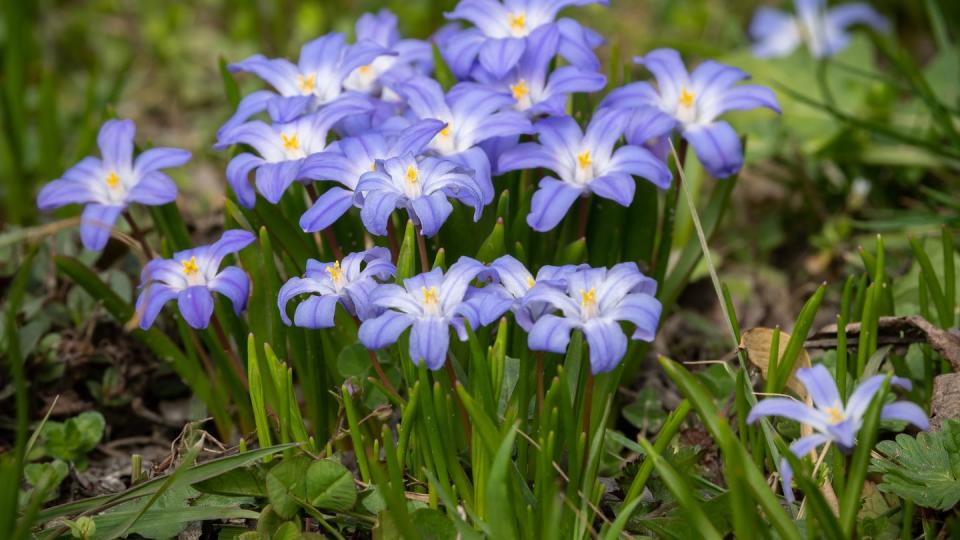
Mediterranean White Heather
This evergreen shrub gets heavy with white flowers come late winter. Its deep green foliage adds depth to your garden.
USDA Hardiness Zones: 6 to 10
SHOP MEDITERRANEAN WHITE HEATHER
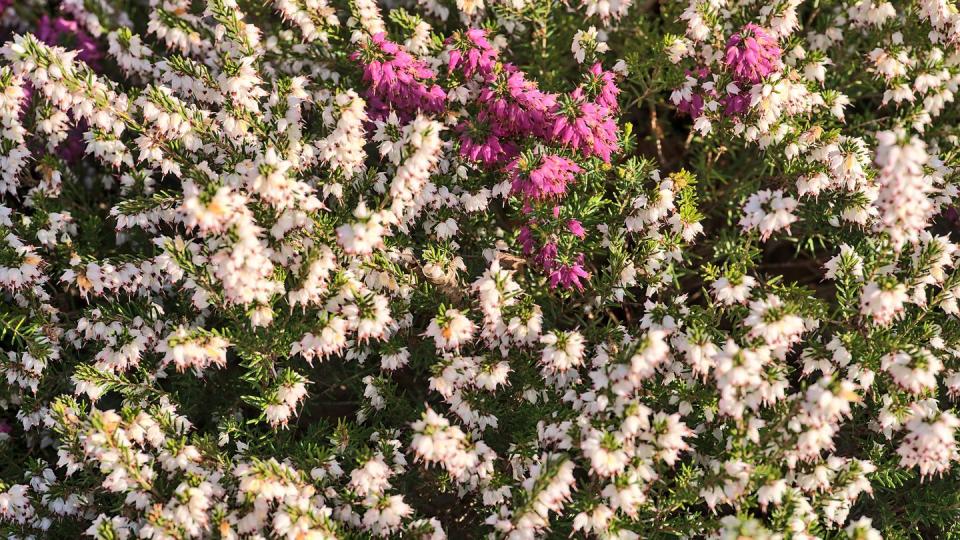
Hellebore
This stunning perennial, also called Lenten rose, shows up in late winter, around the time of Lent, hence the name. It comes in many different shades of white, purple, and pink, with frilly petals or not. They're super cold-hardy, and rodents tend to leave them alone.
USDA Hardiness Zones: 4 to 9
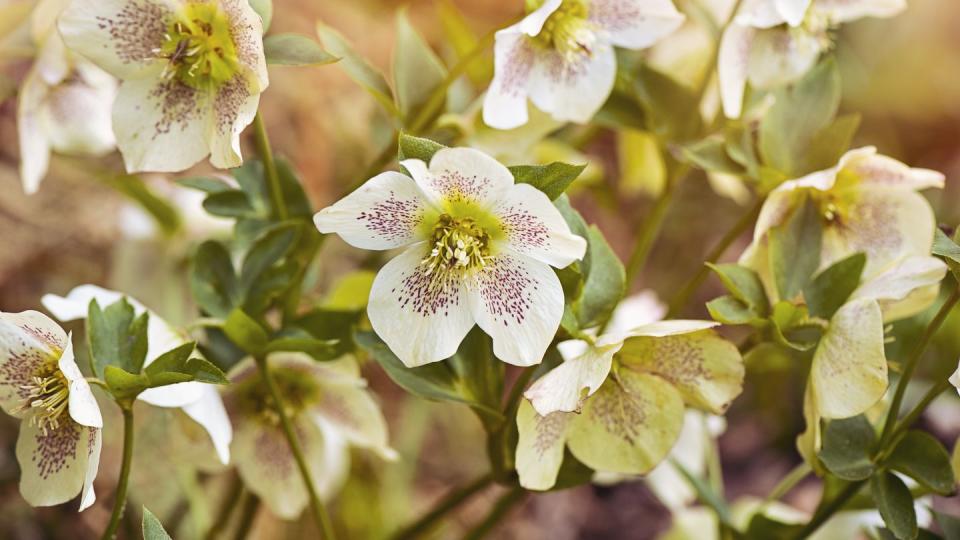
Crocus
Plant these bulbs, or corms, in the fall for the most beautiful late winter or early spring blooms. They're hardier than they look and appear as early as February in cold regions. But don't be surprised if bulbs appear other than where you planted; digging rodents such as chipmunks often "relocate" them for you!
USDA Hardiness Zones: 4 to 8

Daphne
The sweetly scented flowers of these evergreen shrubs emerge in late winter to early spring. Even though they're not mainstream, they definitely deserve a spot in your winter garden. They're a gorgeous shrub for warmer climates.
USDA Hardiness Zones 7 to 9
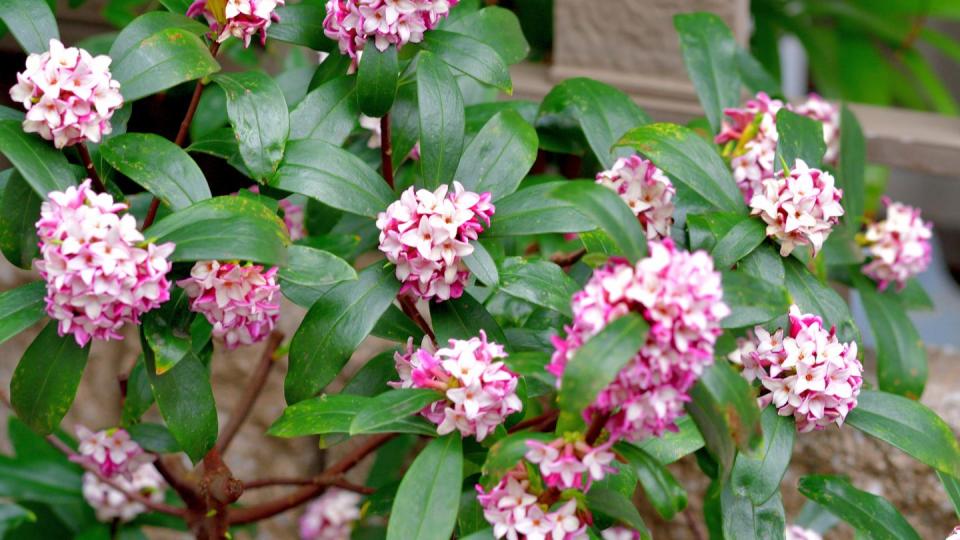
Snowdrops
These sturdy little bulbs, also called galanthus, pop up in very early spring before just about any other flower. With their tiny nodding heads and delicate foliage, they're best planted en masse along walkways or in rock gardens.
USDA Hardiness Zones: 3 to 8

Camellia
These gorgeous evergreen shrubs bloom for weeks in late winter, adding color and drama to the barren landscape. Look for varieties that specifically say they are winter-blooming because some types bloom in fall.
USDA Hardiness Zones 7 to 9

Winterberry
This lovely shrub boasts gorgeous bright red berries, which are absolutely stunning against a background of pure white snow. This native holly is a great addition for winter color in any garden. Look for those with a dwarf habit for compact gardens. Also, make sure you have a "male" and "female" in order to ensure berries develop.
USDA Hardiness Zones 3 to 9
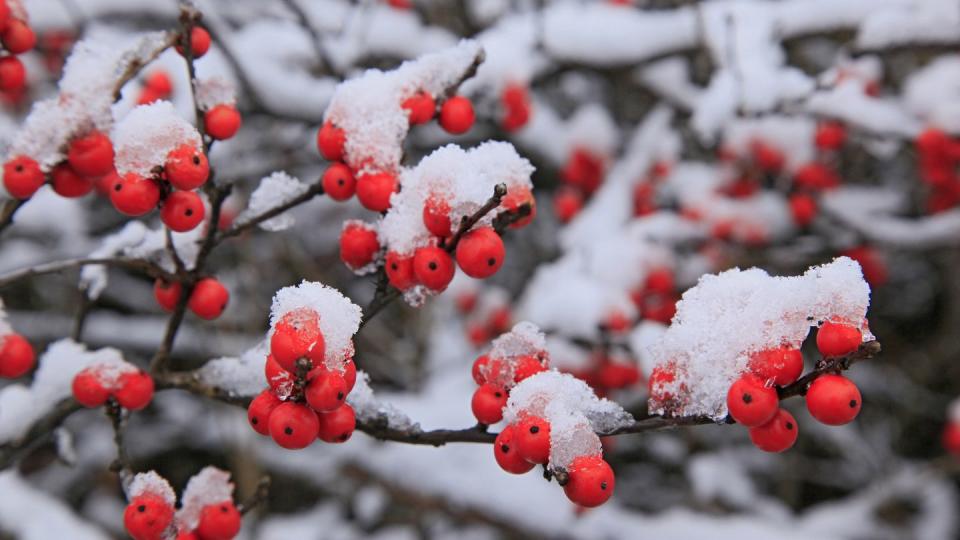
Ornamental Cabbage and Kale
These gorgeous ornamental versions of cabbage and kale are quite cold hardy and add beautiful texture to fall plantings. In the mid-Atlantic and south, these annuals last through much of the winter.
SHOP ORNAMENTAL CABBAGE AND KALE
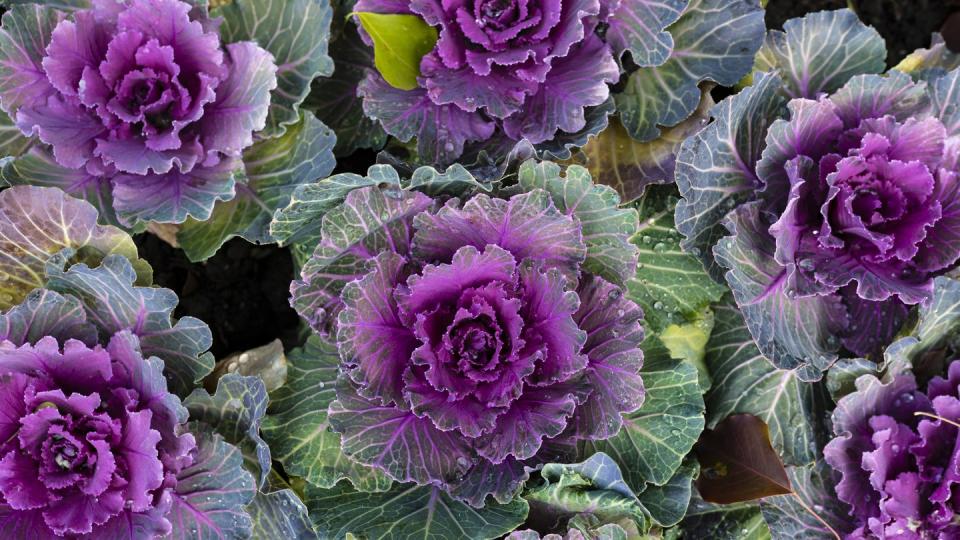
Mahonia
This attractive evergreen shrub is not widely known, but it should be! Attractive whirls of foliage are topped by bright yellow flowers in late fall to early winter.
USDA Hardiness Zones 6 to 9
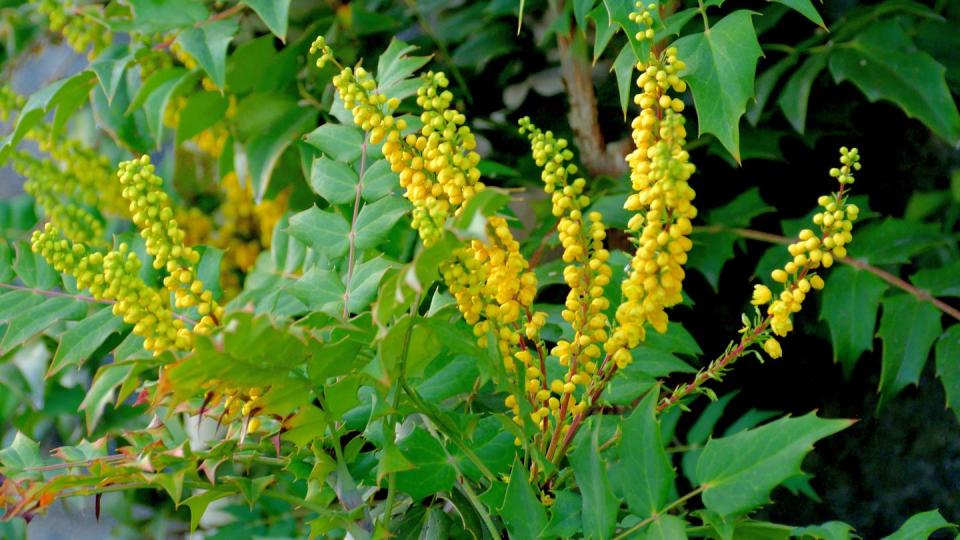
Siberian Scilla
This petite flower pops up in early spring when snow still may be on the ground. Plant it in drifts for a pretty effect. What's best, scilla naturalizes well and will spread eventually.
USDA Hardiness Zones 2 to 8
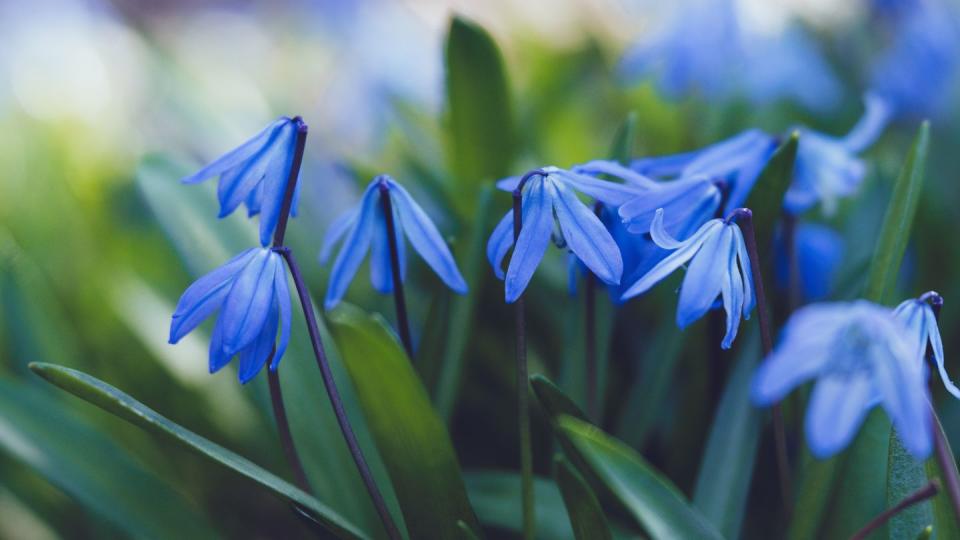
Pieris
This lesser-known shrub, also known as lily of the valley shrub, has lovely cascading clusters of flowers in late winter to early spring. It's one of few flowering shrubs that will tolerate mostly shade.
USDA Hardiness Zones 5 to 8

Pansies
Pansies can be planted in fall and will thrive in southern locations for most of the winter. In the north, some types die back after a hard freeze but may pop up again next spring when temperatures moderate. We love the range of colorful options pansies provide.

Winter Aconite
This is one of those truly unique perennial flowers that doesn't mind cold and snow one bit! It's not a well-known winter flower, but it makes a lovely addition to beds, especially when planted in drifts. Plus, rodents don't usually bother them!
USDA Hardiness Zones 5 to 8

You Might Also Like

